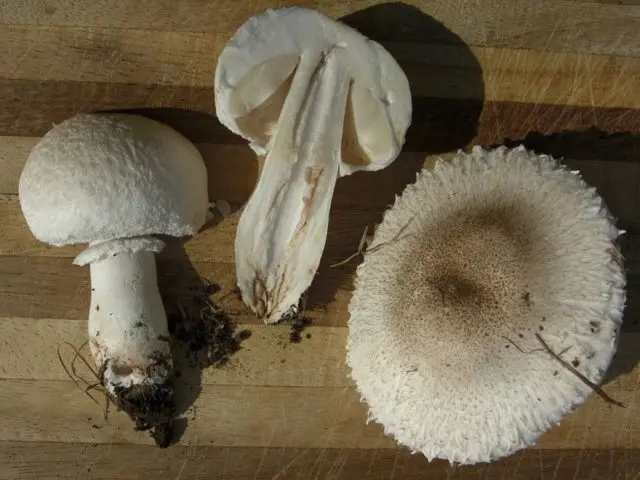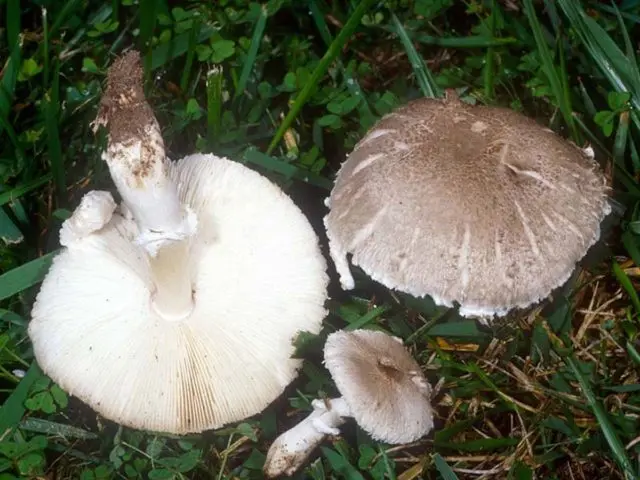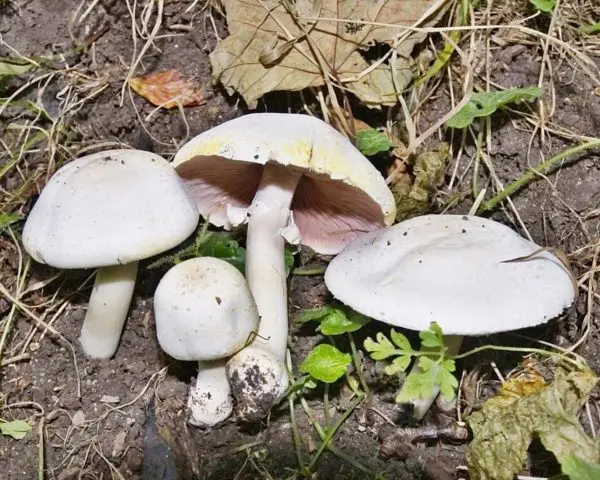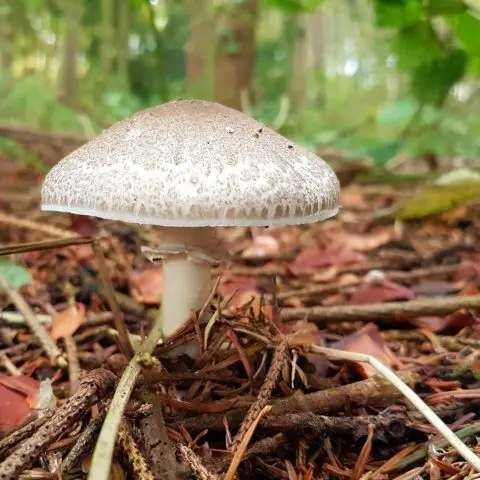Contents
White champignon long-root belongs to the Champignon family, genus White champignon. The synonym of this name is the Latin term – Leucoagaricus barssii. Like most species of the family, this mushroom is edible.
Where does white champignon grow
This species is quite widespread in Asia, North America, Europe and Australia. It is rare on the territory of Our Country, most often it was seen in the Rostov region. In other regions, the appearance is not noticed. Long-rooted white mushroom grows from June to October in the park area, gardens, fields, arable land, roadsides or in ruderal thickets.
What does white champignon look like?

Grows singly or in small groups
At the initial stage of maturation, the cap of the white champignon is hemispherical with edges folded inward, with age it becomes convex-prostrate with or without an elevation in the central part. The size of the cap in diameter is 4-13 cm. The surface is fleecy or scaly, painted in a whitish or gray-brown tone with a darker middle. On the underside of the cap are thin cream-colored plates. In old mushrooms, they acquire a brown tint. Spores are oval or ellipsoid. Spore powder of white-cream color.
The leg of the white champignon is long-rooted, club-shaped and spindle-shaped, tapering towards the base. Its length varies from 4 to 12 cm, and its thickness is 1,5-3 cm. The surface is scaly, painted white or grayish, turning brown when touched. The leg with its base is deeply rooted in the ground, thanks to which this species received the appropriate name. It has a simple whitish ring in the middle or upper part, but may be absent in some specimens. The pulp of the white mushroom is dense, grayish under the skin, in the rest of the fruiting body it is colored white. It has a pronounced mushroom aroma and a pleasant taste reminiscent of a walnut.
Is it possible to eat white champignon long root
White mushroom belongs to the group of edible mushrooms. It has a high nutritional value, and therefore is quite popular with mushroom pickers.
False doubles

Most representatives of the Champignon family are similar to each other, but when collecting, you should beware of some inedible and even poisonous specimens.
This mushroom has several counterparts:
- Champignon yellowskin – the use of this species causes poisoning of the body. You can recognize a double by a hollow leg and yellowing flesh when pressed. When heated, this specimen exudes a strong phenol odor.

- champignon motley belongs to the toxic group. It lives in the temperate climate zone, most often found on the territory of Ukraine. A distinctive feature of the double is white flesh with an unpleasant odor, which, when pressed, becomes brown.

Collection and consumption
For use in food, white champignon long-root does not require preliminary heat treatment. It is great as a main dish in almost any form: fried, boiled, pickled, salted. It can also be used raw in side dishes or salads.
A characteristic feature of the champignon is that it often grows near household plots, along roads or in parks. However, experts assure that mushrooms found within the city should never be eaten. In order not to harm your body, they should be collected only in ecologically clean areas.
Conclusion
White champignon is a valuable and edible mushroom. It is not found so often, as a rule, it settles close to people, for example, in gardens or parks, which is a pleasant surprise for mushroom pickers.











